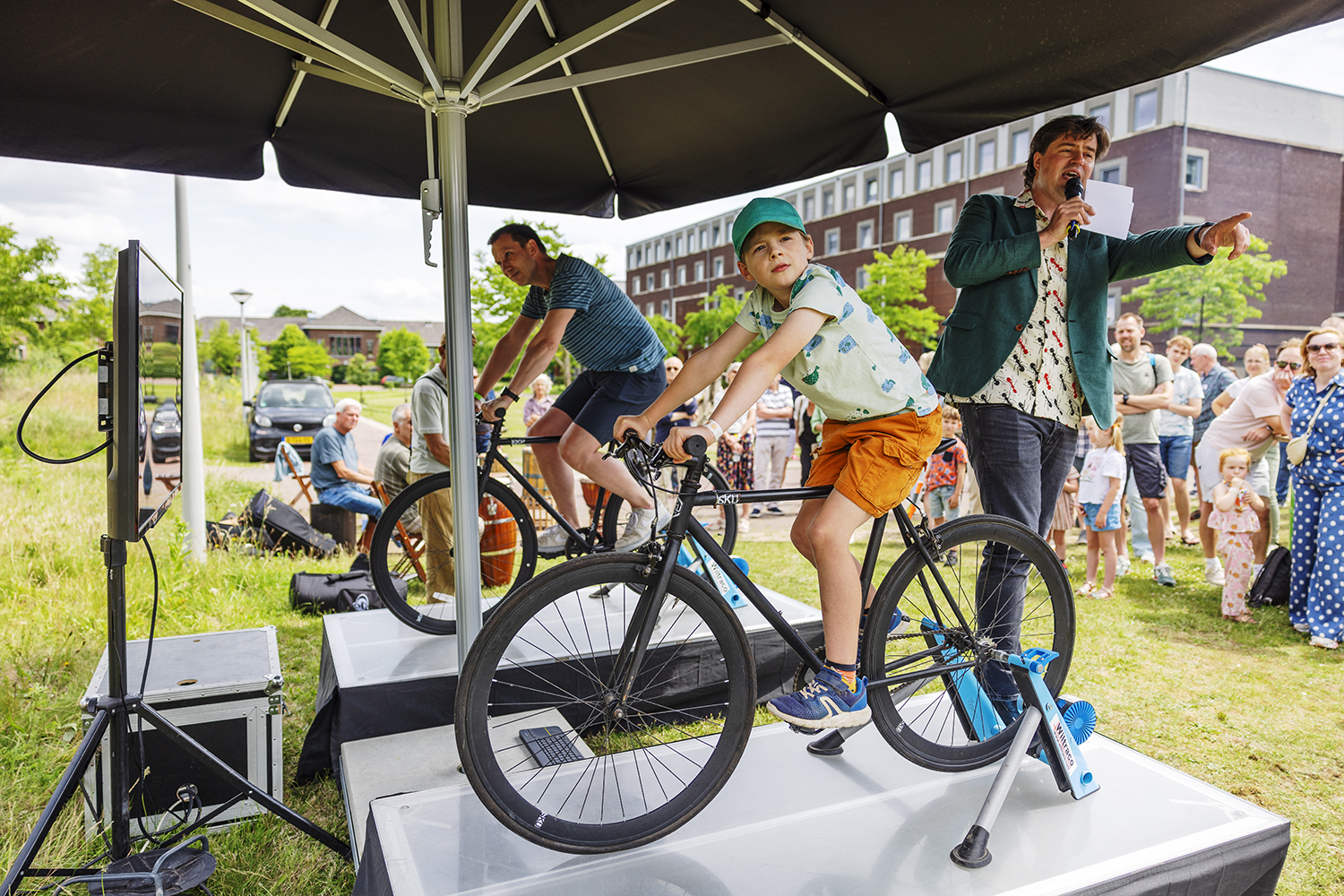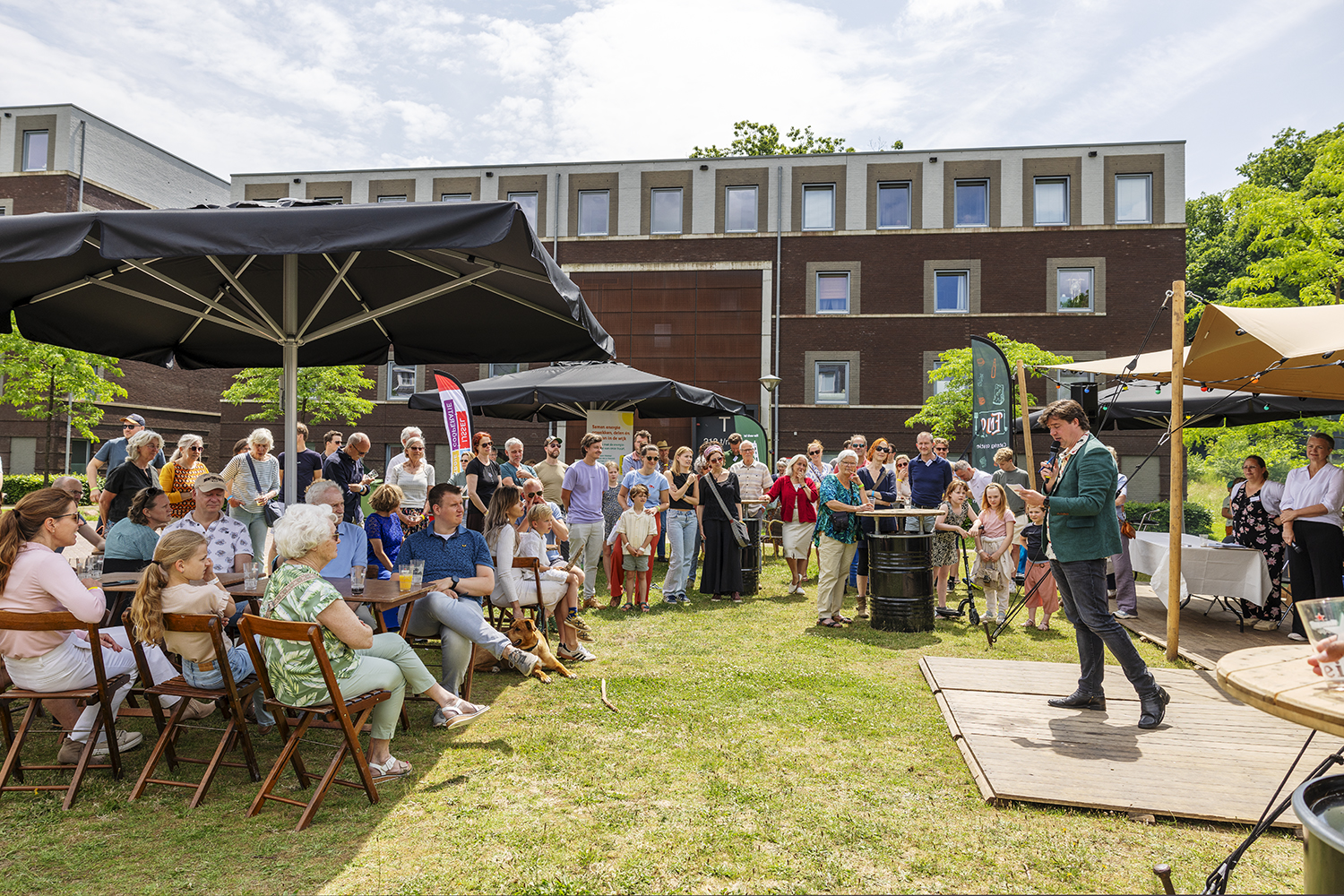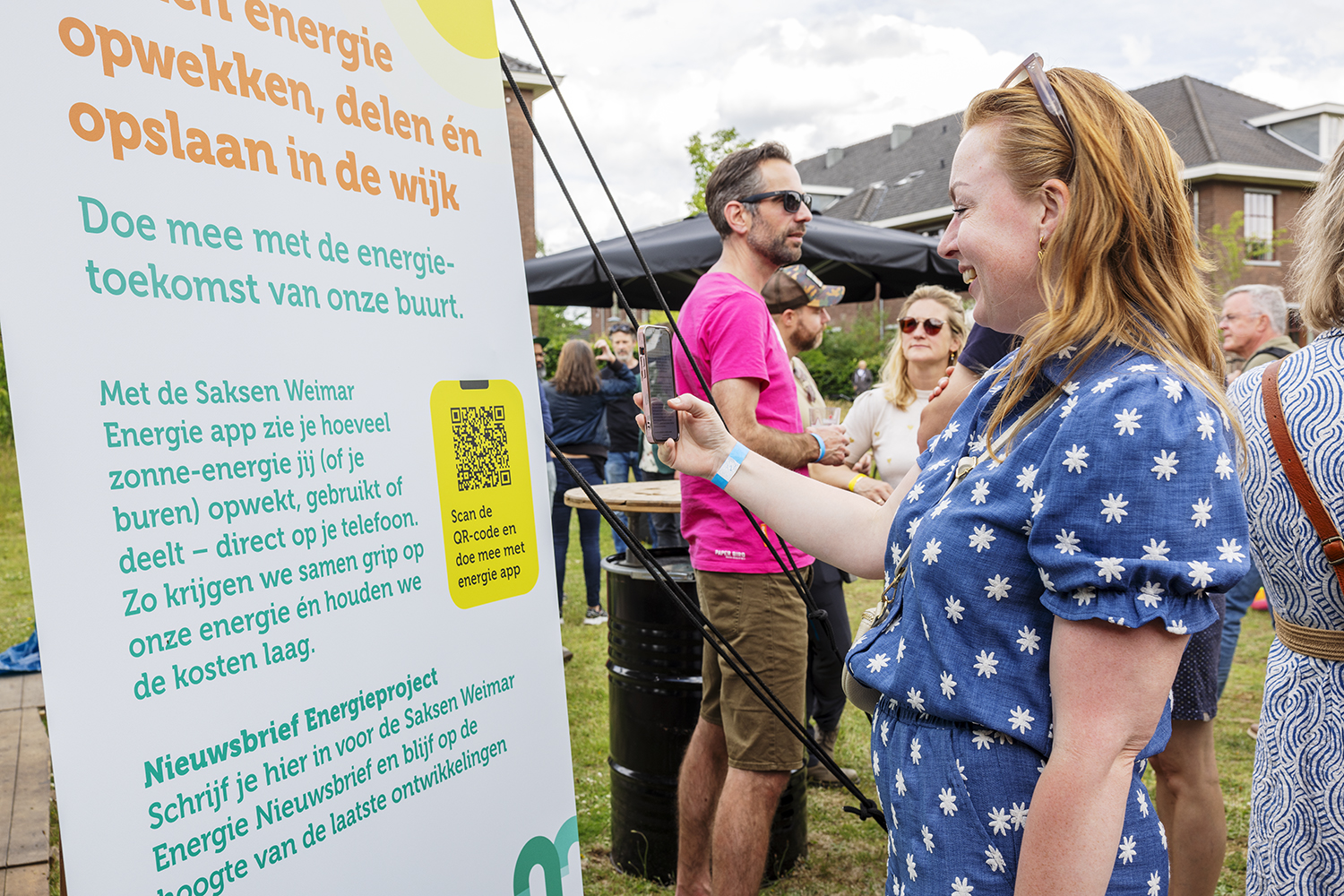The pilot city Arnhem (the Netherlands) officially launched the ACCU project on Sunday 15 June 2025 at the Saksen Weimar neighbourhood festival. Also thanks to the festive aspect of the kick off, there was a strong turnout from the community and the enthusiasm was palpable.
The Saksen Weimar residents, partners, and involved organizations came together to mark the beginning of a unique collaboration: the creation of a local energy community in which solar energy is shared among residents. During the event, there was space for connection, information sharing, and for a joint expression of ambition: to make Saksen Weimar a model neighborhood for the local energy transition. The local residents' group Energy Community Saksen Weimar plays a central role in turning this ambition into reality. The Community is supported by the Municipality of Arnhem, Rijn en IJssel Energy Cooperative, OpenRemote, TU Eindhoven, Vivare, Alliander, Energy Cities, and many others.

How will Saksen Weimar neighbourhood become a model for others?
The project in the Arnhem neighborhood of
Saksen Weimar contributes to the European energy and climate goals and the
growing need for a local energy transition. Within the ACCU project, the pilot
city works together with European partners to gain hands-on experience with
energy communities and energy storage solutions. A residents’ working group – Energy
Community Saksen Weimar – has already been established and is working with
project partners to explore how locally generated solar energy can be shared
and settled among neighbours.
Homeowners with solar panels often produce more electricity than they use, and it’s becoming increasingly less profitable to feed this surplus back into the grid. By creating local storage solutions and developing smart compensation models, the neighbourhood aims to retain this energy. One concrete example is storing excess solar energy in a heat buffer, which can then be used to heat homes in the winter. A remarkable element of the project is the potential use of an old bunker as a seasonal heat storage.
The project is working towards a sustainable, affordable, and resilient local energy system, accessible to all residents – both renters and homeowners. It also aligns with local government policy, such as the Arnhem coalition agreement, the New Energy Made in Arnhem programme, and the Heat Transition Vision, which specifically designates Saksen Weimar as a promising neighborhood for an individual all-electric solution. Through a combination of technological innovation, social engagement, and neighborhood-driven collaboration, this project contributes to a just and future-proof energy transition.
Where to start?
After the summer, the pilot city will begin working with a motivated group of local residents to explore under what conditions they wish to organize themselves into a formal local energy community. The Rijn en IJssel Energy Cooperative will support residents in this process and help explore all possibilities.
The city will also investigate different scenarios for building its future energy system and it twill initiate technical and financial feasibility studies. The goal is to install as many additional solar panels as possible and to store the surplus energy in thermal storage.

The support of project partners is vital in this starting phase. Housing corporation Vivare is considering making its rooftops available for solar panel installation. They are also exploring the feasibility of connecting their apartments to the thermal storage system. There is a hope for signing a letter of intent in autumn 2025. Grid operator Liander is currently exploring connection possibilities for all planned installations.
By 2026, the pilot city Arnhem together with residents expects to have further developed the outline of its future energy system and its energy community.